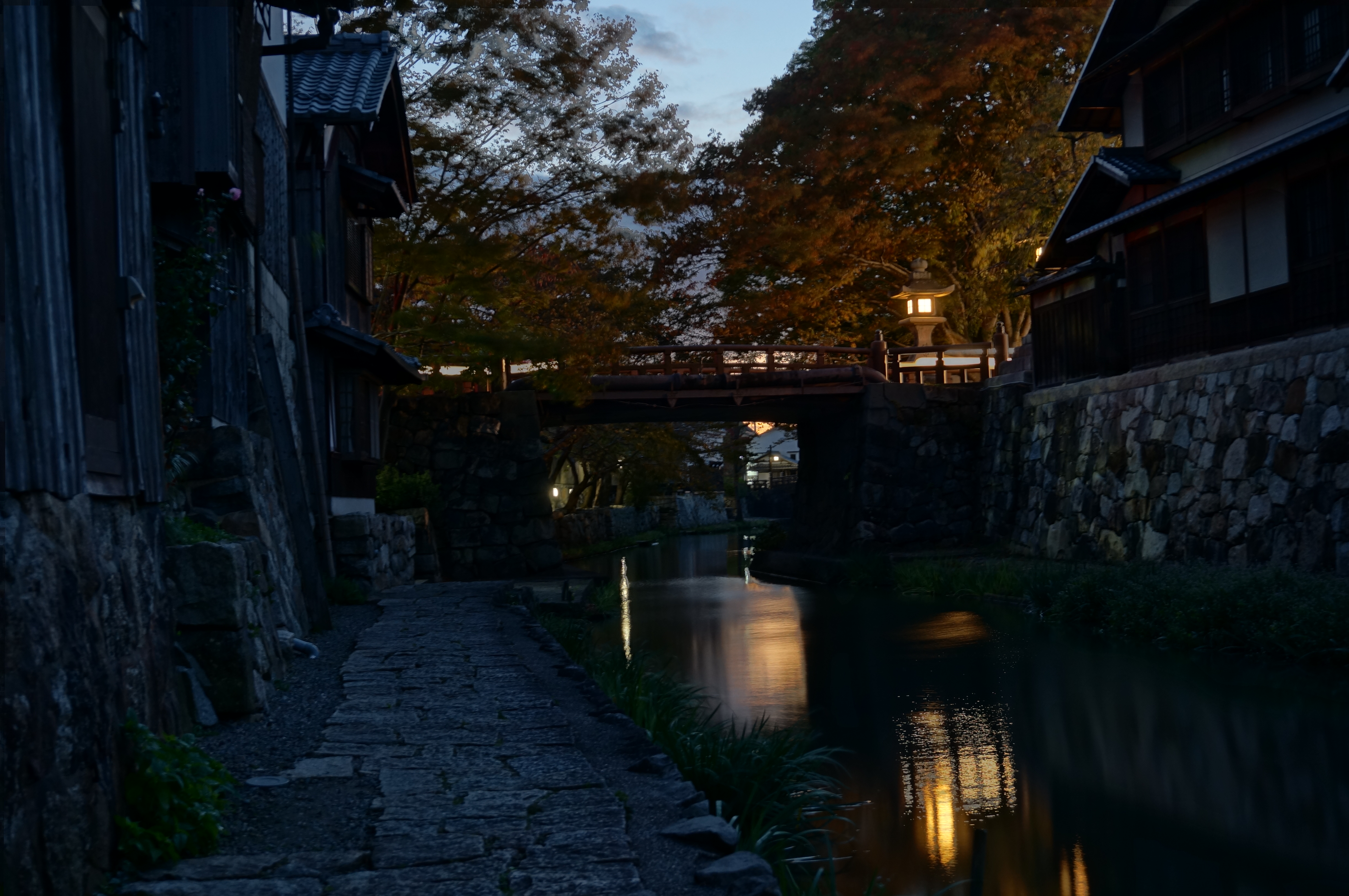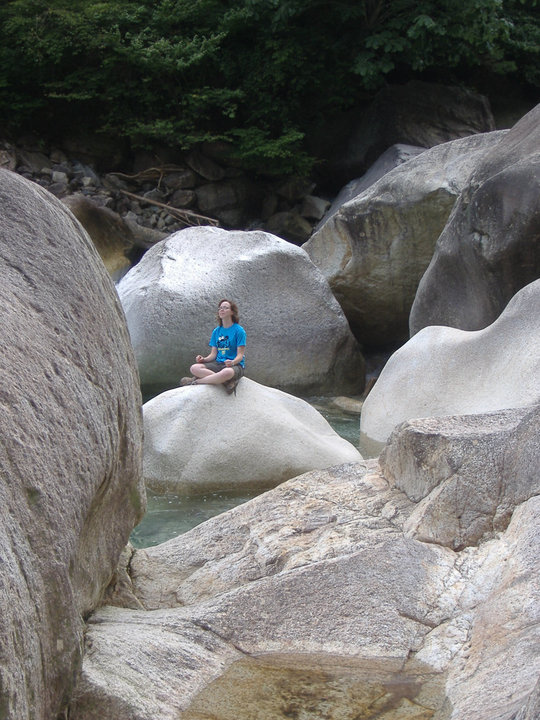Plum Rain
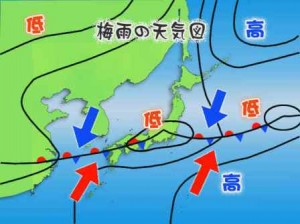 In my first year, in mid-May, I was standing at a checkout counter in fluorescent-lit Jusco. “It’s hot isn’t it,†the lady remarked as she rang up my items. “Yeah, it’s like it’s already summer!†I replied. She considered this. “Well, yeah, except, first comes the rain, then summer,†she informed me. Oh, right, of course.
In my first year, in mid-May, I was standing at a checkout counter in fluorescent-lit Jusco. “It’s hot isn’t it,†the lady remarked as she rang up my items. “Yeah, it’s like it’s already summer!†I replied. She considered this. “Well, yeah, except, first comes the rain, then summer,†she informed me. Oh, right, of course.
Six 100%-humid, sweat-inducing, mold-infested weeks later, I had come to understand what she meant.
Japan’s rainy season, 梅雨 (tsuyu, or plum rains, because now it’s ume season, y’all) is caused by the meeting of two huge air masses: the moist air over the Pacific comes up against the cooler continental air mass, and parks right over east Asia for about two months, providing Japan, Taiwan, Korea, and east China with plentiful precipitation. The season ends when the warm air mass associated with the subtropical ridge pushes this stationary front north, giving us pure, unadulterated summer swelter.
http://tenki.infoseek.co.jp/topic/20100605/
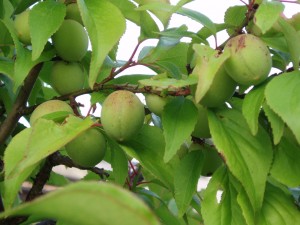 Japan’s rain starts first down in Okinawa, then progresses north like the cherry blossom front a few months before. Okinawa’s official rainy season dates are May 8th to June 23rd, and Tohoku can expect theirs from June 12th to July 27th. Hokkaido is the only area that gets off scot free, and is reportedly downright pleasant during the month of June.
Japan’s rain starts first down in Okinawa, then progresses north like the cherry blossom front a few months before. Okinawa’s official rainy season dates are May 8th to June 23rd, and Tohoku can expect theirs from June 12th to July 27th. Hokkaido is the only area that gets off scot free, and is reportedly downright pleasant during the month of June.
Kansai’s rain period is June 6th to July 19th. The rainy season (clearly) does not keep strict dates, nor does it rain every single day within this period, but it does put a damper on outdoor activity planning, laundry-doing, and my general sanity levels.
To keep from losin’ your shit, here are a few helpful tips for the rainy season:
• Dehumidifiers – almost all the stores will be selling little portable water-absorbers by the truckload. It’s a good idea to stick them in the corners of your closets and other spaces you want to help keep dry. You’ll want to check these from time to time and replace them when they get full.
• Don’t forget nooks and crannies like your shoes. They sell shoe-insert water absorbers too. The little things in your life can grow mold as well!
• Larger, electric dehumidifiers can be used to persuade the water out of your laundry. These can be pricey, but they can also be worth it.
• 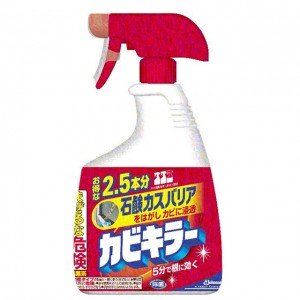 You may want to locate the nearest laundromat with dryers. Make friends with someone who can drive.
You may want to locate the nearest laundromat with dryers. Make friends with someone who can drive.
• Invest in rain boots and a decent umbrella. If you bike, consider those full-body plastic suits that look so silly. Or, an umbrella holder for your bike.
• You may also want to invest in lots of カビã‚ラー (kabi killer, excellent for mold) and use it generously on your bathroom surfaces. Wet wipes are good too.
• Airflow is important. You may have the urge to shut your house up to keep the wet out, but allow me to counsel you: you cannot keep anything out with your flimsy oft-penetrated walls. Better to keep the fans on. You may have to strategically aim the fans in problem areas when you leave for the day (for example, the top of my fridge would collect condensation since the freezer was cold. The condensation would turn to mold beneath the shelter of the microwave. When I went to work, I stood the fan on top of a chair in the kitchen so it would constantly be blowing on the top of the fridge, thus saving me from further mold-scrubbing experiences in that spot).
• Bugs like to get out of the rain too. This is also mukade season, so keep an eye on your drains, and you might want to surround your house with that bug-protection powder. Remember that mukade hideously tend to come in pairs, so if you find one, try to find its brother too.
• You will sweat, a lot, and your hair will not behave. You might feel sluggish and unmotivated. Don’t worry, this is normal; just ganbare! If you do outdoor sports, they will be muddy, if indoor, they will be six times sweatier. Your students may also get a little weird, especially if you teach in elementary schools. Not getting to play outside for days on end sucks for them too.
•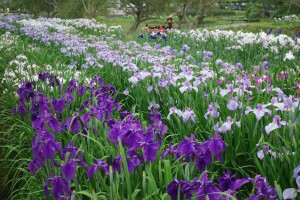 If travel is how you get your kicks, don’t despair. Japan Guide (http://www.japan-guide.com/e/e2277.html) points out that the rainy season means tourist attractions will be less crowded, and some locations are pretty awesome in the rain.
If travel is how you get your kicks, don’t despair. Japan Guide (http://www.japan-guide.com/e/e2277.html) points out that the rainy season means tourist attractions will be less crowded, and some locations are pretty awesome in the rain.
• June showers bring June flowers. This season is also a good time for irises and hydrangeas, so whether capitalizing on a sunny afternoon or just gaman-ing in your boots and raingear, consider taking in the views of these rainy season specialties.
• When sunny days do occur, imitate your neighbors in hanging outside every piece of bedding and laundry you’ve been saving for two weeks.
If you know of tips I haven’t mentioned, please share them in the comments section of this article on the Hyogo Times website!
And don’t worry, rainy season also ends. Be patient with yourself and those around you, and it’ll just fly by.

